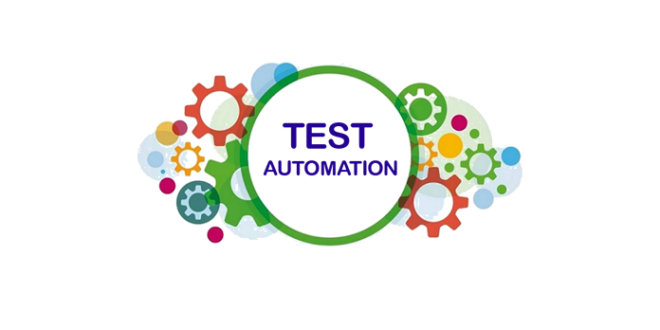From Manual to Automated Testing: A Comprehensive Guide to Transitioning Smoothly and Efficiently
In the realm of software program screening, the shift from handbook to automated procedures has come to be a significantly essential transition for companies seeking to improve efficiency and precision in their screening methods. The trip from handbook to automated screening is not without its challenges, yet when approached purposefully and with a clear plan in mind, the advantages can be substantial.
Benefits of Automated Testing
Automated testing supplies many benefits, enhancing effectiveness and precision in software program development processes. Automated examinations can be run all at once on several tools and running systems, considerably speeding up the testing phase compared to hands-on testing.
Additionally, automated screening makes sure a greater level of accuracy in finding issues. Given that automated examinations comply with predefined manuscripts, human mistake is lessened, bring about even more dependable test results. Consistency in testing is also improved, as automated examinations carry out the exact same steps precisely each time they are run. This consistency is critical in ensuring that all functionalities of the software are extensively checked, minimizing the probability of undiscovered bugs slipping via to manufacturing.
Choosing the Right Devices

Firstly, assess your objectives and requirements. Recognize the scope of your project, the innovations included, and the skill collection of your team. This analysis will certainly assist you establish the attributes and capacities you need in your screening tools.
Secondly, consider the compatibility of the devices with your existing procedures and systems. Smooth combination with your current software growth lifecycle is vital to ensure a smooth change to automation.
Furthermore, assess the scalability and flexibility of the devices. As your testing requires progress, the tools need to have the ability to adjust and accommodate adjustments successfully.
Finally, consider the assistance and community around the tools. When carrying out automated testing, durable support and an energetic individual area can supply valuable sources and support. By carefully taking into consideration these elements, you can select the right tools that straighten with your demands and established the stage for an effective transition to automated testing.
Writing Efficient Test Scripts

When crafting examination manuscripts, it is necessary to take into consideration the details demands of the software being examined and guarantee that the manuscripts deal with all critical performances. Clear and descriptive calling conventions for test manuscripts and examination instances can improve readability and maintainability. In addition, incorporating mistake handling mechanisms within the test scripts can assist in recognizing and dealing with problems promptly.
Moreover, arranging test scripts right into modular components can improve reusability and scalability, lowering redundancy and enhancing effectiveness in examination script maintenance. Routine testimonials and updates to evaluate manuscripts are crucial to keep speed with advancing software demands and capabilities. By following these principles, testers can develop efficient and durable test scripts that contribute substantially to the success of automated screening procedures.
Integrating Automation Into Workflows
By seamlessly incorporating automated testing devices like Selenium or Appium into the software program development lifecycle, groups can achieve faster responses on code changes, leading to quicker pest detection and resolution. This assimilation enables for continual testing throughout the growth process, ensuring that any type of concerns are determined early on, resulting in greater software top quality. Proper combination of automation tools calls for partnership between growth, testing, and procedures groups to establish a unified process that maximizes efficiency and efficiency in delivering top notch software items.
Ensuring a Smooth Shift
Efficiently transitioning to automated testing includes careful preparation and careful execution to lessen disturbances and make best use of performance in the software development process - automation testing. To make sure a smooth shift, it is essential to start by conducting a detailed assessment of the current basics testing procedures and identifying areas where automation can bring the most substantial advantages. Engaging straight from the source with all stakeholders early in the procedure, consisting of programmers, testers, and task supervisors, is critical for amassing assistance and buy-in for the automation campaign
Interaction is crucial throughout this shift stage. Clear communication of the goals, benefits, and expectations of automated screening aids to take care of any resistance or problems that might emerge. In addition, giving adequate training and sources for employee to upskill in automation devices and strategies is crucial for making sure a successful change.

Final Thought
To conclude, transitioning from handbook to automated screening uses countless advantages, consisting of increased efficiency and reliability. By selecting the suitable tools, composing efficient test scripts, and integrating automation effortlessly right into operations, organizations can ensure a smooth and successful transition. It is vital to embrace automation as an important possession in software application testing processes to boost total top quality and performance.
In the world of software program screening, the change from manual to automated procedures has actually come to be a significantly vital change for companies looking for to improve efficiency and accuracy in their screening methods. Automated examinations can be run concurrently on several devices and running systems, considerably speeding up the testing phase contrasted to hands-on testing. Consistency in screening is likewise improved, as automated examinations carry out the exact go to this website same steps specifically each time they are run.To make sure the successful execution of chosen screening tools, the creation of reliable examination scripts plays a critical duty in verifying the functionality and efficiency of automated processes - automation testing. By following these concepts, testers can create efficient and durable examination manuscripts that contribute dramatically to the success of automated testing procedures